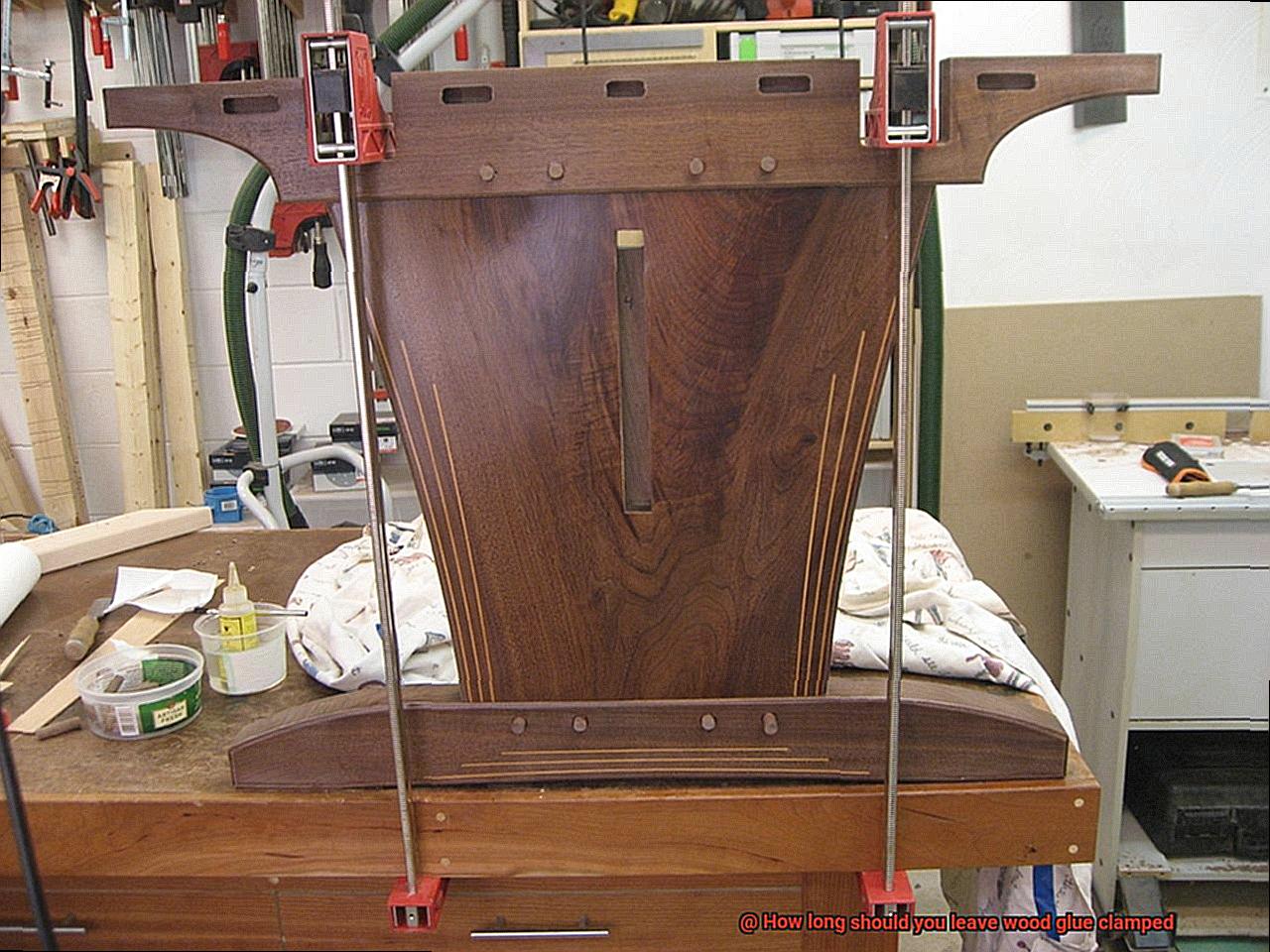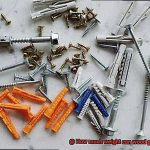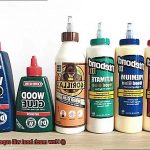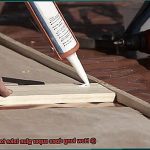Calling all woodworking enthusiasts. If you’re ready to take your craft to the next level or tackle that DIY project with confidence, then you’ve come to the right place. Today, we’re diving headfirst into the world of wood glue and answering that burning question: how long should you leave those clamps on?
Wood glue is like the secret sauce of sturdy joints – it’s what holds everything together and ensures your masterpiece stands the test of time. But here’s the thing: slapping on some glue and crossing your fingers won’t cut it. To achieve maximum strength and durability, proper clamping is essential.
In this blog post, we’ll unravel the mysteries behind optimal clamping time for wood glue. We’ll explore the factors that influence drying time (because let’s face it, no one wants to wait around forever), why clamping is a non-negotiable step, and most importantly, the recommended durations for different types of wood glue.
So grab yourself a steaming cup of coffee (or tea if that’s more your style), find a cozy spot, and let’s embark on this clamping adventure together. By the end, you’ll be armed with all the knowledge you need to confidently clamp your projects for success. Let’s get started.
What is Wood Glue?
Contents
Woodworking is an art that demands precision, intricate details, and the perfect tools.
When it comes to joining wooden pieces together, one material stands out as the key to success: wood glue. Prepare to dive into the fascinating world of wood glue as we explore what it is, its various types, and how it can create unbreakable bonds in woodworking projects.
- Known by several names such as carpenter’s glue or woodworking glue, wood glue is an adhesive specially crafted for bonding wood surfaces.
- The magical ingredient in wood glue is polyvinyl acetate (PVA), a synthetic resin that transforms into a sticky substance and forms a strong bond once it dries.
- Unlike solvent-based adhesives that harm the environment, wood glue is non-toxic, water-based, and environmentally friendly.
Types of Wood Glue:
- Liquid Wood Glue: The go-to option for most woodworking applications.
- Gel Wood Glue: Perfect for vertical surfaces or bridging gaps between wooden pieces due to its thicker consistency.
- Paste Wood Glue: Similar to toothpaste in texture, it works wonders when filling cracks or repairing damaged wood.
Properties and Characteristics:
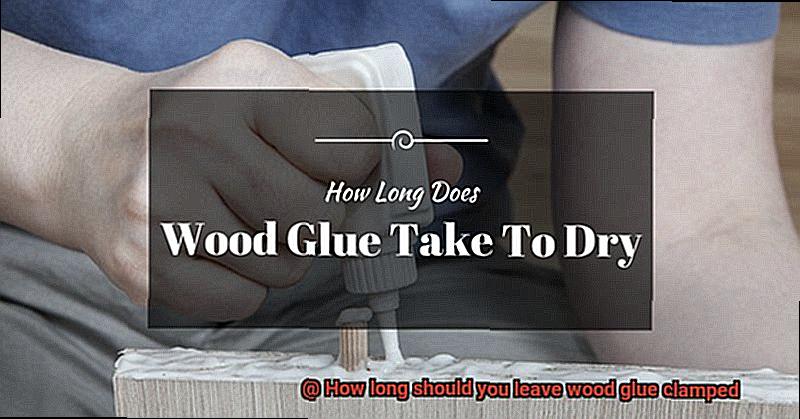
- Penetration: Wood glue has an impressive power to penetrate deep into the porous structure of wood, forging a bond with the very fibers of the material itself.
- Gap-Filling: Don’t fret over small gaps or imperfections between wood surfaces; wood glue possesses remarkable gap-filling properties that ensure a seamless finish.
Clamping Time:
- Recommended clamping time varies depending on factors such as the type of glue used, the type of wood being bonded, and environmental conditions.
- A general rule of thumb is to clamp wood glue for at least 30 minutes to an hour.
- Fast-setting glues work their magic within 15-30 minutes, while traditional PVA or aliphatic resin glues might require several hours, or even up to 24 hours, to fully cure.
Factors Affecting Clamping Time:
- Type of Glue: Each wood glue has its own drying and curing time, so choose accordingly.
- Type of Wood: Hardwoods may demand lengthier clamping times due to their denser structure compared to softer woods.
- Environmental Conditions: Temperature and humidity levels play a significant role in the drying and curing time of wood glue.
Why Clamp Wood Glue?
When it comes to woodworking projects, the importance of clamping wood glue cannot be overstated. It may seem like an extra step that takes up time and effort, but trust me, it’s worth it. Here’s why:
- Ensuring a Strong Bond: Wood glue is a powerful adhesive that forms a bond by penetrating the fibers of the wood. However, simply applying the glue and hoping for the best won’t cut it. Clamping is essential because it applies pressure to the joint, squeezing out any excess glue and allowing the adhesive to spread evenly across the surfaces being joined. This pressure helps create a strong and durable bond between the pieces of wood.
- Preventing Shifting or Movement: Have you ever seen a poorly executed woodworking joint where the pieces of wood are slightly misaligned? That’s likely because clamping was skipped or not done properly. When you clamp wood glue, it holds the pieces of wood in place, preventing any shifting or movement during the drying time. This is crucial because any movement can weaken or even break the joint, leading to a failed project.
- Controlled Curing Environment: By clamping wood glue, you create a controlled environment for the adhesive to cure properly. The alignment and pressure provided by clamping allow the glue to bond effectively, resulting in a stronger joint. Without proper clamping, the glue may not cure evenly or thoroughly, leading to weak spots in the joint.
- Drying and Curing Time: Different types of wood glues have varying drying times, and it’s important to follow the manufacturer’s instructions regarding clamping time for each specific type of glue. Typically, most wood glues require clamping for at least 30 minutes to an hour. However, some may require longer clamping times, especially if you are working with hardwoods or if the joint requires extra strength. Remember, clamping time does not necessarily equate to full curing time, so be patient and wait for the recommended curing time before subjecting the joint to heavy loads or stress.
- Factors to Consider: Temperature and humidity can affect the drying and curing time of wood glue. Higher temperatures and lower humidity levels can accelerate the process, while cooler temperatures and higher humidity may require longer clamping times. It’s also important to consider the size and complexity of your project. Larger or more intricate projects may require extended clamping times to ensure a strong and secure bond.
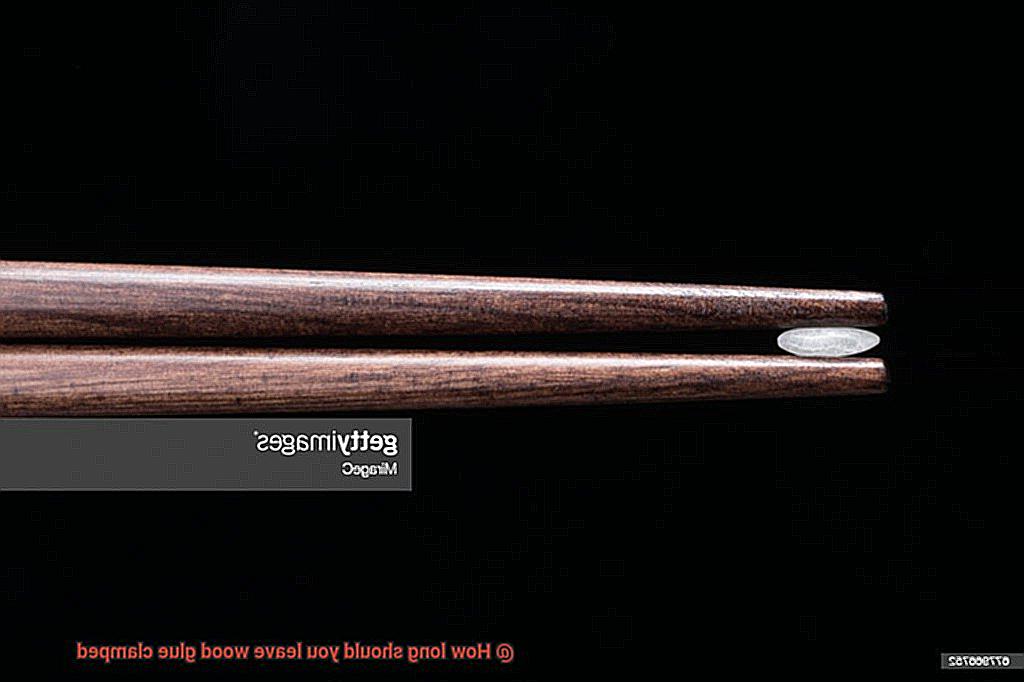
Factors that Affect Clamping Time
Clamping time is a critical step in woodworking that ensures the strength and durability of glue joints. Understanding the factors that affect clamping time can help woodworkers achieve optimal bonding and avoid weak or failed joints. Let’s explore these factors in detail to gain a deeper understanding.
- Type of Wood: The type of wood being glued together has a significant impact on clamping time. Softwoods, such as pine or cedar, have a porous structure that readily absorbs glue. As a result, they have faster curing times and require shorter clamping durations. In contrast, hardwoods like oak or maple are denser and less absorbent, necessitating longer clamping times for the glue to fully cure.
- Temperature and Humidity: The environmental conditions during glue-up play a crucial role in determining clamping time. Glue cures faster in warmer temperatures, as heat accelerates the chemical reactions that harden the glue. Therefore, working in a warm workshop or on a sunny day can reduce clamping time. Conversely, colder temperatures slow down the curing process, prolonging clamping time. Additionally, high humidity can hinder the drying process of wood glue, further extending clamping durations.
- Type of Glue: Different types of wood glue have varying curing times. Traditional yellow or white glue, also known as polyvinyl acetate (PVA) glue, typically requires 30 minutes to an hour of clamping time for optimal bond strength. However, specialized glues like epoxy or cyanoacrylate (CA) may have shorter or longer clamping times depending on their specific formulations.
- Glue Application: The way in which glue is applied affects clamping time as well. Thicker glue lines or excessive amounts of glue take longer to dry and cure properly, requiring extended clamping times. It is crucial to apply a thin and even layer of glue to ensure sufficient bond strength without unnecessarily prolonging clamping time.
- Joint Design: The design and complexity of the joint being glued together can influence clamping time. Simple butt joints or edge-to-edge joints may require shorter clamping times, as the surface area for bonding is larger. Conversely, more intricate joinery techniques like mortise and tenon or dovetail joints might need longer clamping durations to ensure a strong bond due to their smaller contact areas.
- Pressure Applied: The amount of pressure applied during clamping is crucial for proper bonding and affects clamping time. Adequate pressure ensures that the glue spreads evenly and makes good contact with the wood surfaces. Too much pressure can squeeze out excess glue, weakening the joint and potentially extending clamping time. Conversely, too little pressure can result in weak bonds and longer clamping times. Finding the right balance is essential.
Types of Wood Glue
Wood glue is the unsung hero that holds our woodworking projects together. With a plethora of options available, it can be daunting to choose the right type of wood glue for your specific needs. Moreover, knowing how long to clamp the glue for optimal strength adds another layer of complexity. In this guide, we will delve into the different types of wood glue and their recommended uses, while providing insights on clamping times for each.
PVA Glue (Polyvinyl Acetate): The Versatile Workhorse
PVA glue is the go-to choice for most woodworking projects. Its versatility, ease of use, and strong bonding capabilities make it a staple in any woodworker’s toolbox. Perfect for general woodworking applications, PVA glue has a short clamping time of 30 minutes to 1 hour. However, for a bond that stands the test of time, leaving it clamped for 1-2 hours ensures maximum strength.
Polyurethane Glue: The Indestructible Bond
When you need a bond that can withstand the harshest conditions, polyurethane glue is your best bet. Resistant to water, heat, and solvents, it excels in outdoor projects or high-stress joints. The clamping time for polyurethane glue ranges from 1 to 4 hours. For ultimate strength, leaving it clamped overnight or for at least 6-8 hours is recommended.
Epoxy Glue: The Powerhouse Adhesive
Epoxy glue is the superhero of wood glues when it comes to structural bonding or repairing wooden furniture. Its two-part formula creates an incredibly strong bond that can endure heavy loads. Clamping times may vary depending on the product, but to ensure a rock-solid bond, leaving epoxy glue clamped for 4-6 hours or overnight is advised.
Hide Glue: The Timeless Favorite
For antique furniture restoration or reversible bonding, hide glue reigns supreme. Its unique properties allow for easy disassembly if needed. With a clamping time of 30 minutes to 1 hour, hide glue requires patience to achieve a strong bond. To ensure longevity, leaving it clamped overnight or for at least 6-8 hours is recommended.
Cyanoacrylate Glue: The Swift Solution
When time is of the essence, cyanoacrylate glue saves the day. Instantly forming a bond upon contact with moisture, it excels in small repairs and joinery work. Clamping time is incredibly short, usually just a few seconds to a couple of minutes.
Fast-Setting and Quick-Setting Glues
In the world of woodworking, precision and attention to detail are paramount. But sometimes, time is not on our side. That’s where fast-setting and quick-setting glues come to the rescue, offering a speedy solution without compromising on strength.
Fast-setting glues live up to their name, drying within a few minutes. However, quick-setting glues take things up a notch by curing in as little as 30 seconds. These glues owe their rapid performance to specific chemical formulations that accelerate the curing process.
Available in various forms – liquid, gel, or paste – fast-setting and quick-setting glues cater to different project requirements. Whether you’re working with wood, metal, plastic, or ceramics, there’s a glue that suits your needs.
To ensure successful bonding, carefully read and follow the manufacturer’s instructions. Each glue may have different working times and requirements. Prepare all materials beforehand and work swiftly. Clamping is still necessary to ensure optimal contact between surfaces. The length of clamping time depends on the specific glue and project requirements.
Although fast-setting and quick-setting glues offer shorter clamping times compared to regular wood glue, do not rush the drying and curing process. Prematurely removing clamps can compromise the bond’s strength and integrity. Leave the glue clamped for at least 30 minutes to one hour.
After the recommended clamping time, allow the glued joint to fully cure for at least 24 hours before subjecting it to stress or load. Keep in mind that temperature and humidity conditions can affect drying and bonding times.
Traditional PVA and Aliphatic Resin Glues
When it comes to woodworking, choosing the right glue is essential for creating strong and durable projects. Two popular options are traditional PVA glue and aliphatic resin glue.
PVA glue, also known as white glue or wood glue, is a water-based adhesive that is widely used in woodworking. It is beloved for its ease of use and quick drying time. To ensure a solid bond, it is recommended to clamp wood pieces together for a minimum of 30 minutes to an hour. The drying time can vary depending on factors like temperature, humidity, and the thickness of the glue line. Following the manufacturer’s instructions is crucial for optimal results.
On the other hand, aliphatic resin glue, also called yellow or carpenter’s glue, is renowned for its exceptional bonding strength and resistance to moisture. Like PVA glues, aliphatic resin glues require clamping during the drying process. However, the recommended clamping time is typically longer, ranging from 1 to 4 hours. Longer clamp times result in stronger bonds, but excessive clamping can lead to issues such as glue squeeze-out or uneven pressure distribution.
To achieve strong bonds with both types of glues, it is important to apply an even layer of glue to both surfaces being joined together. This promotes a solid bond and reduces weak spots in the joint. Additionally, using proper clamping techniques like edge gluing or biscuit joining enhances the strength and stability of the glued joint.
While the recommended clamping times mentioned above are generally sufficient for most woodworking projects, consulting the specific instructions provided by the glue manufacturer is always a good idea for optimal results.
The Type of Wood Being Glued
Wood glue is a superhero in the world of woodworking, but its success depends on understanding the unique characteristics of different types of wood. Clamping times play a crucial role in achieving strong and durable bonds. In this article, we will delve into the clamping times for popular woods like oak, mahogany, and pine, unveiling the secrets to successful woodworking projects.
Hardwoods: Oak vs. Mahogany
- Oak, a dense hardwood with low porosity, requires longer clamping times.
- For a secure bond, leave oak clamped for 24 to 48 hours.
- Mahogany, while also a hardwood, has slightly higher porosity than oak.
- Clamping mahogany for 12 to 24 hours is usually sufficient.
Softwoods: The Quick Absorbers
- Softwoods like pine have open pores that allow for quick glue absorption.
- Typically, clamping pine for 12 to 24 hours ensures a strong bond.
Moisture Content Matters
- Wood with high moisture content takes longer to dry as excess moisture must evaporate before the glue cures.
- Ensure the wood being glued has appropriate moisture content before applying adhesive.
Special Considerations
- Plywood or veneered surfaces may require extra clamping time due to multiple layers.
- Consult the manufacturer’s instructions or seek expert advice when working with these woods.
Environmental Conditions
Wood glue is the unsung hero of woodworking, providing the strength and durability necessary for crafting masterpieces. However, achieving the optimal bond requires an understanding of how environmental conditions influence the drying and curing process. In this article, we will explore the fascinating relationship between temperature, humidity, air circulation, and wood moisture content, and their impact on wood glue. Join us as we embark on this captivating journey through the intricacies of environmental conditions.
Temperature: Igniting the Flame
Just like a fiery romance novel, temperature plays a sizzling role in the drying process of wood glue. Higher temperatures ignite a passionate fire, accelerating drying time. Conversely, colder temperatures cool things down, slowing the process. To achieve optimal results, aim for temperatures between 18 to 25 degrees Celsius (65 to 77 degrees Fahrenheit). So whether you turn up the heat or cool it down, avoid extremes that can compromise the strength of your bond.
Humidity: The Dance of Moisture
Humidity acts as the dance partner that can make your experience steamy or leave you high and dry. High humidity slows down moisture evaporation from the glue, prolonging drying time. On the contrary, low humidity creates a fast-paced tango, speeding up the process. Aim for moderate humidity levels between 40% to 60% to ensure a perfect bond without warping or swelling issues. Let’s keep things balanced and dance our way to success.
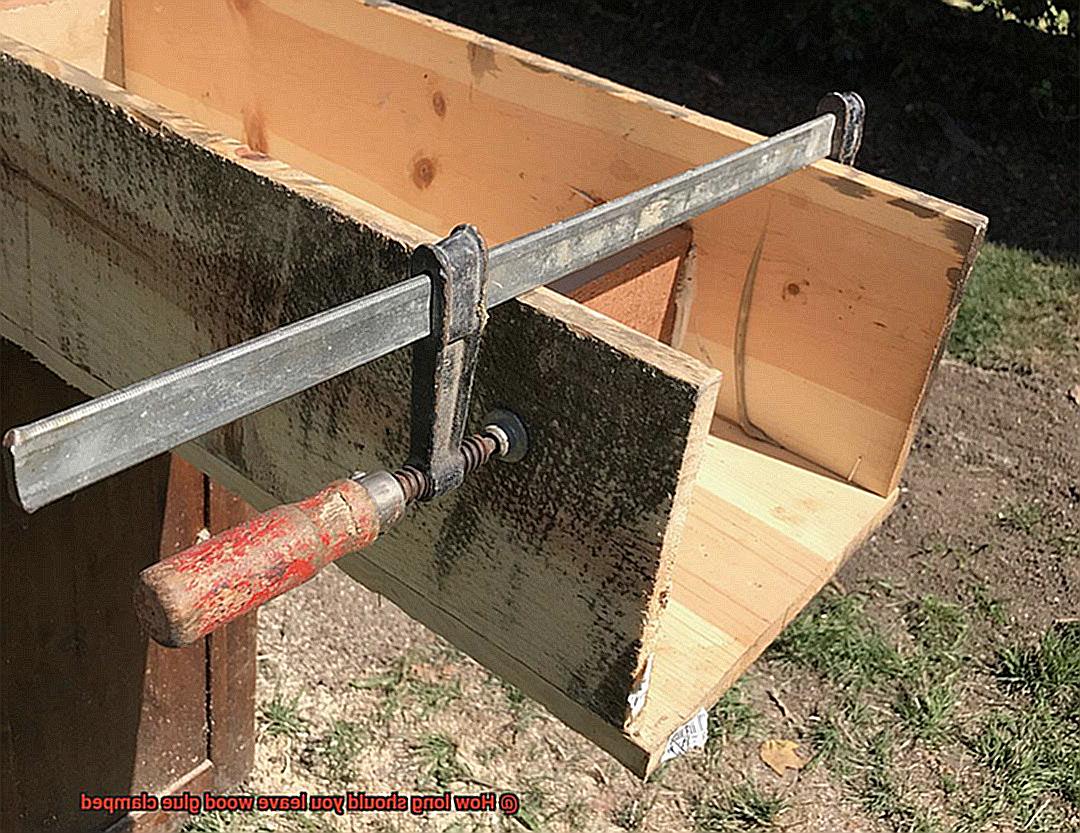
Air Circulation: A Breath of Freshness
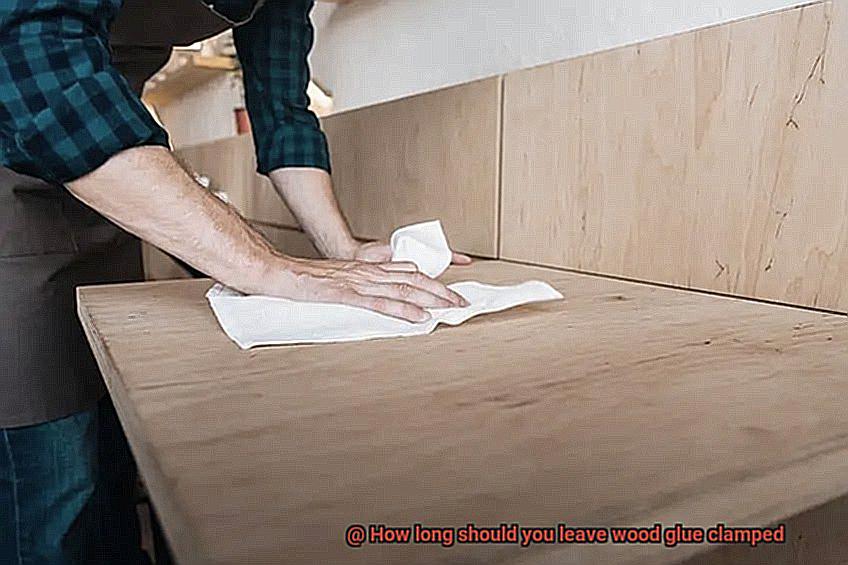
Every love story needs fresh air to flourish, and wood glue is no exception. Adequate air circulation is essential for efficient drying and curing. Good airflow removes excess moisture from the glue, hastening drying time. So grant your glued pieces some breathing space in a well-ventilated area. Avoid confining them in stuffy closets or cramped corners, as it could lead to longer drying times and potential bonding issues. Let the love flow freely.
Wood Moisture Content: Striking the Perfect Balance
In this relationship, wood moisture content determines the fate of your bond. Freshly cut or green wood can be a wet blanket, affecting the drying time of wood glue. Allow the wood to dry or acclimate before applying glue to reach an optimal moisture content. Use a moisture meter to accurately measure the wood’s moisture content because in this love story, balance is everything.
Type of Wood Glue: A Match Made in Heaven
Just like finding the perfect partner, choosing the right type of wood glue is essential. Different glues have varying drying and curing times. Some are quick to bond, while others take their time to reach full strength. Read the manufacturer’s instructions for specific guidance on clamping and drying times. Remember, true love (and strong bonds) requires patience.
U0hhFjjW5EU” >
Also Read: How To Glue Plywood Together?
Conclusion
When it comes to using wood glue, one crucial step is clamping the pieces together. But how long should you leave them clamped? Well, the answer depends on a few factors. Firstly, it’s important to consider the type of wood you’re working with. Softer woods may require less clamping time compared to harder ones.
Additionally, the temperature and humidity of your workspace play a role. In warmer and more humid conditions, wood glue tends to dry faster. However, if it’s colder or drier, you might need to extend the clamping time for a stronger bond.
Furthermore, the type of wood glue you’re using can affect drying times as well. Some glues dry quicker than others, so be sure to read the instructions provided by the manufacturer.
As a general guideline, leaving wood glue clamped for at least 30 minutes is recommended. However, for optimal results and a secure bond, it’s best to leave it clamped for several hours or even overnight.
Remember that patience is key when working with wood glue. Rushing the process and removing the clamps too soon can result in weak joints and potential project failure.
So take your time, allow the glue ample opportunity to dry and set properly. This way, you’ll ensure a sturdy and durable finished product that will stand the test of time.
In conclusion, there isn’t an exact timeframe for how long you should leave wood glue clamped. It depends on various factors such as wood type, temperature, humidity, and glue type. However, allowing at least 30 minutes of clamp time is advisable. For best results though, consider leaving your project clamped overnight or for several hours. Remember to follow manufacturer instructions and exercise patience throughout the process.

